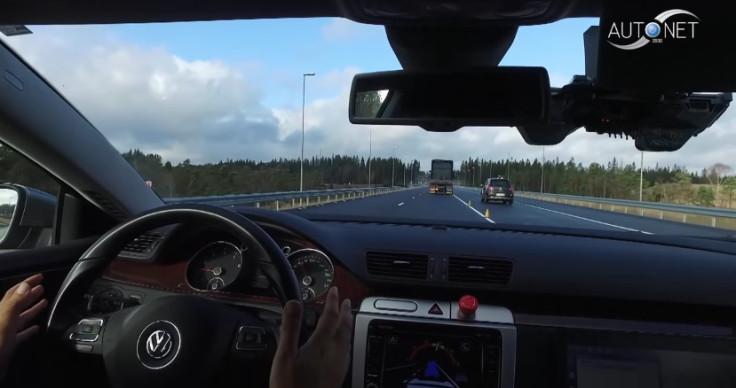Smart new algorithm gives autonomous cars better motorway manners than you
French academics create algorithm to teach autonomous cars how to safely work together on the motorway.

A team of French academics have created an algorithm capable of directing a platoon of autonomous cars around human-driven traffic at high speed, using Wi-Fi to share information between each vehicle.
From the École Polytechnique Fédérale de Lausanne (EPFL), the academics say the algorithm can be used to create platoons of any size, comprising of autonomous vehicles following the lead of a single (or multiple) human-driven cars.
Footage released by the group shows how autonomous cars can work their way around slower vehicles on multi-lane roads, and make space for cars merging onto the motorway.
The system, designed with the roads and technology of 2030 in mind, also gives each vehicle a far-reaching, 360-degree view of the road ahead and behind by sharing what each car can see with every other member of the platoon.
Alcherio Martinoli, head of the group's algorithms laboratory, said: "The whole goal of the project is to essentially increase coordination on the road and eventually achieve reduced fuel consumption and additional safety.
"It may not seem so impressive with other three cars, but for the first time we were able to validate what we had achieved in the simulation. And the number of vehicles in the convoy has no impact on the complexity of the control mechanism."
A demonstration of the technology shows how a car wanting to merge onto a highway. The two other vehicles recognise this and autonomously adjust their position to give space for the car to merge.
'Platooning', as it has become known, is already being worked on in the haulage industry, where a string of autonomous trucks are programmed to follow each other. But the system demonstrated here is more advanced, in that it can deal with more vehicles, multiple lanes and situations where the convoy is interrupted by an unconnected vehicle.
The system is designed to work in situations where roads are shared by human- and computer-driven vehicles of varying artificial intelligence. Although autonomous and connected cars have already begun to populate our roads, it will be decades before the majority of vehicles share the same level of advanced intelligence. Algorithms like this will help vehicles to cooperate with each other and work their way around slower moving traffic.
© Copyright IBTimes 2025. All rights reserved.






















